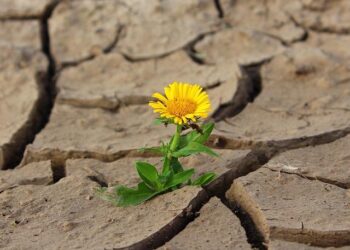Amid a surge of newcomers to the country, Toronto shelters started turning away people in early June and referring them to federal programs — saying the city’s shelters need more financial support from Ottawa.
The debate over who should foot the bill for sheltering them got, at times, confusing as different terms for them were used more or less interchangeably.
Immigration Minister Sean Fraser said Ottawa was committed to keeping a “roof over the head of asylum seekers” upon announcing a one-time injection of some $212 million, including $97 million for Toronto, into the Interim Housing Assistance Program.
Newly elected Mayor Olivia Chow, meanwhile, said even that extra cash won’t “meet the needs of refugees” in Toronto.
Refugees or asylum seekers — which are they? And what’s the difference?
WATCH | Fraser addresses lack of housing:

What sort of additional support do asylum seekers need in Canada?
Immigration Minister Sean Fraser discusses the latest funding for asylum seekers. CBC’s Power and Politics also get reactions from two advocates for newcomers in Canada.
Who is an asylum seeker?
Officially, an asylum seeker — also called an asylum claimant or refugee claimant — is anyone who was forced out of one country and came to Canada asking for safe haven because of their dire situation.
They have been let in, provisionally, after declaring at any Canadian port of entry or online they are seeking refugee status and being deemed eligible by the Canada Border Services Agency (CBSA) or Immigration, Refugees and Citizenship Canada (IRCC). If not, they’re deported.
LISTEN | This former refugee is ‘giving back’:

Metro Morning8:33She was a refugee five years ago, and now she is ‘giving back’ by sheltering and feeding asylum seekers in her apartment
Metro Morning’s Mary Wiens spoke to Josephine Namulwena, as well as asylum seekers she is hosting in her home.
Claimants can be rejected if they’ve committed a serious crime, made a previous claim in Canada, made a claim in another country with which Canada shares immigration information, or received protection in another country.
Once approved, asylum seekers are allowed to stay until the federal government decides whether they qualify as a refugee.
In the meantime, they may have access to social assistance, education, health services, emergency housing and legal aid.
Who is a refugee?
To qualify as a refugee, a hearing before the Immigration and Refugee Board must agree that the claimant can’t go home because they meet one of two conditions:
a “well-founded fear of persecution” based on their race, beliefs, or other distinction.having been “seriously affected” by war or denied basic human rights “on an ongoing basis.”
People recognized as refugees are allowed to stay in Canada and may apply to become permanent residents and eventually citizens.

A lack of shelter space in Toronto has forced the newcomers to sleep outside, leading to calls for more help from Ottawa. (Alex Lupul/CBC)
Who helps refugees?
Either private sponsors or the government.
Sponsors — either individuals or organizations — sign an agreement with the federal government to help one or more refugees with housing, clothing and food.
Most sponsorships last for one year, but for some refugees may go up to three.
Otherwise, under the Resettlement Assistance Program, the federal or Quebec provincial government helps refugees with essential services and income support once they are in Canada.
The financial support includes a one-time household start-up allowance and a monthly income.
The level of monthly support is generally based on the prevailing social assistance rates in the province where the refugee settles. Financial support can last up to one year after a refugee arrives in Canada, or until they can support themselves, whichever occurs first.
What about ‘resettled refugees’?
Unlike asylum seekers, resettled refugees are screened abroad and undergo security and health screenings prior to being issued a visa to come to Canada. They must be referred by the UN High Commissioner for Refugees, another designated referral organization or a private sponsorship group.
When they arrive in Canada, they are permanent residents.
They enjoy the same benefits as refugees coming through the asylum seeker stream, except those with private sponsors, who get only six months of income support from the Resettlement Assistance Program.
What happened those people in Toronto?
The roughly 200 newcomers who had been living on the street in downtown Toronto are now staying at two churches in the city’s north end.
After Fraser announced the additional funding, Prime Minister Justin Trudeau’s office said he and Chow met and agreed to work together to improve “refugee support and resettlement efforts in Toronto.”
Chow and Ontario Premier Doug Ford on Wednesday called on Ottawa to build on that “stop-gap” funding and to fully support the needs of “these refugees and asylum seekers.”
Whether the people now housed in those churches are refugees, asylum seekers or both remains unclear.
>>> Read full article>>>
Copyright for syndicated content belongs to the linked Source : CBC News – https://www.cbc.ca/news/canada/asylumseeker-refugee-canada-1.6910123?cmp=rss































